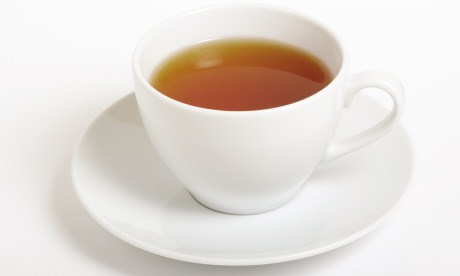
Take your tea milky? You're not the only one, says Brendan Wan. Here are five uniquely delicious interpretations of milk tea from Asia
The act of adding milk to one’s cup of tea has long been viewed as the most quintessential aspect of British culture. Acclaimed travel writer, Bill Bryson once wrote: “to this day, I remain impressed by the ability of Britons of all ages and social backgrounds to get genuinely excited by the prospects of a hot beverage.”
Tea was introduced to the British via the Portuguese in the 17th century. The exact origins of milk tea, however, still remains unclear. Some historians claim that the practice was used to appeal to the European taste buds unfamiliar to strong taste of tea. Others debate that milk was added due to fears that the scolding hot temperatures would damage the delicate porcelain cups used at the time.
Milk tea is a long-standing British tradition which has been revitalised and reinvented with numerous varieties in Asia, each holding their own distinct character and flavour...
Hong Kong milk tea, also known as ‘pantyhose’ milk tea, is the perfect Hong Kong afternoon delight. Made using a blend of various tea-leaves, evaporated milk, condensed milk and occasionally egg shells, Hong Kong milk tea delivers a smooth, rich and creamy texture with a harmonious sweet and strong taste. A pantyhose-looking sackcloth strainer (hence the name) is used to strain the tea thoroughly, intensifying the caffeine and smoothing the tea aroma.
As many Hong Kong shopkeepers regard their recipe as highly guarded ‘commercial secrets’, the exact ingredients of which tea leaves are used differs among the teahouse community. The most basic combination used is said to consist of English breakfast, Irish breakfast, black lycee, jasmine green, Puh-er and Assam. However, it has been reported that some stores use up to 15 different types of tea in their recipe.
Bubble milk tea is the latest evolution of milk tea in Asia and the one that has become the most popular. On any given street corner in Taiwan, a bubble milk tea stand can inevitably be found, making it the contemporary counterpart to the traditional Chinese teahouses. Bubble milk tea recipes vary due to the vast number of flavours available but bubble milk tea mainly consists of brewed tea (green, black, jasmine or oolong), powder milk, flavouring, sugar syrup and tapioca balls.
It is deliciously sweet in taste and simply fun to drink due to the playful chewiness of the tapioca balls. But be warned: one regular cup of bubble milk tea contains roughly the same amount of calories as a Big Mac.
With its bright amber colour, Thai iced tea serves as the perfect drink on a sticky hot summer’s day. This truly refreshing milk tea is usually served over ice and its ingredients consist of strongly brewed black tea, sweetened condensed milk, evaporated milk and various aromatic spices including star anise, green cardamom, orange blossoms, cloves, cinnamon and grounded tamarind. Thai iced tea has an interesting mixture of enriching flavours that will intrigue your taste buds. It has a rich creamy texture, hints of floral character, a subtle liquorice aroma and a mild spicy bite to finish. The overbearing sweetness nicely binds all these vastly opposing flavours together, and with the added bonus of the ice; we get a milk tea beverage that cools our bodies and eases our minds. Thai iced tea is perfect when served alongside spicy Thai cuisine.
Teh tarik, literally translated as 'pulled tea', is a common milk tea beverage often found in hawker stalls and coffee shops throughout Malaysia. Made using Ceylon black tea leaves and condensed milk, teh tarik produces a soft creamy texture with an exceptionally strong tea aroma.
The name derives from the pouring process in which the tea mixture is repeatedly stretched from one cup to the other. This theatrical stretching process is believed to thoroughly mix the tea and condensed milk, accentuating the strong aroma and resulting in a thick frothy top that somewhat resembles a caffé latte.
For a real Malaysian breakfast experience, enjoy a cup of teh tarik alongside a plate of Roti Canai (Indian-influenced flatbread). Heavenly bliss.
Recognisable by its distinct pink colour, noon chai is the most unique out of all the milk teas in Asia. It is made using a type of Darjeeling tea called ‘Pahari’, whole milk, salt, baking soda and a variety of spices and nuts. The strange ingredient of baking soda is used to ignite a chemical reaction in the tea, causing noon chai’s special pink colour. Noon chai delivers a really strange combination of exotic flavour to the drinker; a rich salty taste, aromatic spicy notes and an unexpected nutty texture.
Noon chai is believed to hold certain health properties; helping to promote digestion and boosting one’s immune system. It is a common beverage in Kashmiri households served during breakfast, weddings and other special occasions, with freshly baked breads such as baqurkhani, kulcha or naan.